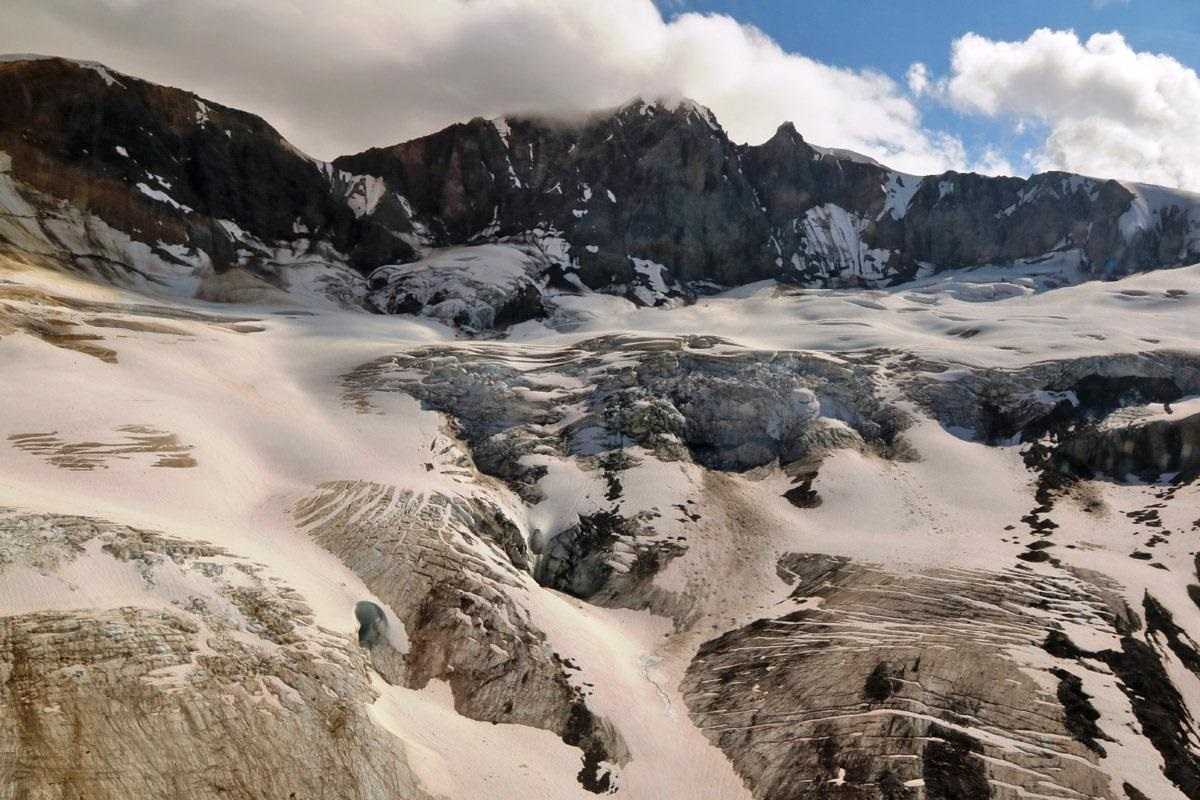
Fumaroles on Job Glacier. These gas vents were first noticed in 2016 and formed as ice volume has decreased. They show that Mount Meager is not extinct. Photo credit: Martyn Unsworth
Geophysicists from the University of Alberta spent the summer collecting data at Mount Meager-a dormant volcano in British Columbia-to better understand its potential for geothermal energy production, volcanic activity and landslides.
"There's a proven geothermal energy resource at Mount Meager, but this is also a very geologically active region. In 2010, it saw one of the largest landslides ever recorded in Canada," said Martyn Unsworth, lead of the University of Alberta survey and professor in the Department of Physics. "In 2016 a number of steam vents became active, showing that the volcano is still active. That makes it critical that we construct a detailed picture of what's going on underground."
In the 1980s, geothermal exploration studies found 250°C water trapped underground in the area, raising the potential for geothermal electricity generation at the site.
Now, recently-constructed power lines in the area make harnessing this renewable energy source an economically-viable prospect-but as Unsworth explains, developers need more data first, and that's where his team comes in.
"With geothermal development, companies need information about how much hot water is underground, and also what geological risks are present at the surface," said Unsworth. "With our techniques, we're able to construct a 3D model of exactly what's under the surface-in terms of landslide potential, volcanic eruption hazards, and the extent of the hot water resource."
Beneath the surface
The survey was led by the Geological Survey of Canada and brought together a number of teams from both the University of Alberta and the University of Calgary, using a helicopter to land in areas inaccessible by road. The data collected will be used to construct a 3D model of the ground to a depth of up to 20 kilometres.
"What we determine with our measurements is where the hot water and rock is coming from," said Unsworth. "When we combine these results with geology and other types of data, we can start to say what's down there and what the eruption risk is."
The team has begun an analysis of the data collected this summer and will put together their findings over the coming months. Unsworth and his team have successfully applied these techniques around the world at geothermal sites including Iceland, the Philippines, and Mexico-which makes a survey like this in Canada all the more exciting.
"A lot of people don't think there are volcanoes in B.C.-but there's actually a line of volcanoes that comes all the way up from California, including Mount St. Helens," said Unsworth. "Being able to apply our expertise on a dormant volcano right here in Canada is really valuable."
The research at Mount Meager was funded through the Future Energy Systems program at the University of Alberta, which develops the energy technologies of the near future, integrates them into today's infrastructure, and examines possible consequences for our society, economy, and environment.
Want to learn more about geothermal energy research at UAlberta? Check out our Geothermal & Alternative Energy hub, highlighting news, research, and initiatives from the field happening on campus.